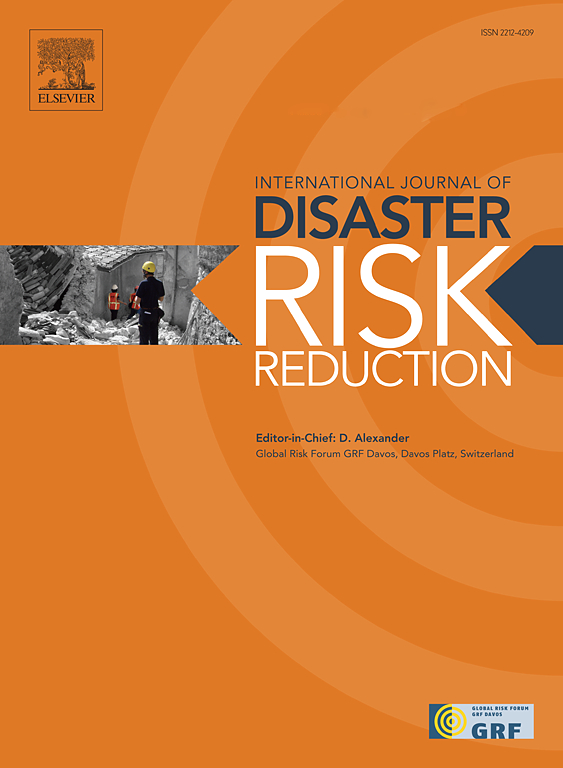International comparison of pandemic policies in the United States and Japan: Combination of all-hazards and single-hazard approaches as a realistic option to policymaking for public health emergency management system
IF 4.2
1区 地球科学
Q1 GEOSCIENCES, MULTIDISCIPLINARY
International journal of disaster risk reduction
Pub Date : 2024-09-25
DOI:10.1016/j.ijdrr.2024.104858
引用次数: 0
Abstract
The all-hazards approach (AHA) is a ground concept of crisis management to build common capabilities to deal with diverse hazards and adopted as the standard approach by many countries. The single-hazard approach (SHA), on the other hand, is a concept in which measures are taken specifically for a particular disaster. The recent COVID-19 pandemic has raised a policy debate on the effectiveness of pandemic preparedness in both AHA and SHA regimes, which has yet to be settled. This is because not sufficient studies have been conducted to compare policies under both concepts systematically. In this study, a new analytical framework was developed to compare pandemic policies under AHA and SHA concepts. The framework was designed to analyze coverage of hazards and actions for pandemic preparedness and response in the policy documents. The United States (the U. S.) and Japan were selected as the representative countries adopting AHA and SHA respectively. As a result, we empirically demonstrated for the first time that both countries combined multi-hazards and single-hazard countermeasures. This will provide new alternative solutions for the binary argument between two approaches. We also analyzed the coverage of actions for pandemic preparedness and response and found that while both countries comprehensively scoped overall actions, there were significant differences in coverage of individual actions. These findings may be useful to identify agenda to improve pandemic policies after the COVID-19 in each country and the framework developed in this study provides a new tool contributing to policymaking for crisis management.
美国和日本大流行病政策的国际比较:将全灾种和单一灾种相结合作为公共卫生应急管理系统决策的现实选择
全灾种方法(AHA)是危机管理的一个基本概念,旨在建立应对各种灾害的共同能力,被许多国家作为标准方法采用。另一方面,单一危害方法(SHA)是一个专门针对特定灾害采取措施的概念。最近发生的 COVID-19 大流行引发了一场政策辩论,讨论在 AHA 和 SHA 体系下大流行病防备工作的有效性,这一问题尚未解决。这是因为没有进行足够的研究来系统地比较这两种概念下的政策。在本研究中,我们建立了一个新的分析框架来比较 AHA 和 SHA 概念下的大流行病政策。该框架旨在分析政策文件中有关大流行病防备和应对的危害和行动的覆盖范围。美国和日本分别被选为采用 AHA 和 SHA 的代表性国家。因此,我们首次通过经验证明,这两个国家将多种危害和单一危害的应对措施结合在一起。这将为两种方法之间的二元争论提供新的替代解决方案。我们还分析了大流行病防备和应对行动的覆盖范围,发现虽然两国都全面地确定了整体行动的范围,但在单项行动的覆盖范围方面存在显著差异。这些发现可能有助于各国在 COVID-19 之后确定改进大流行病政策的议程,本研究中开发的框架为危机管理决策提供了新的工具。
本文章由计算机程序翻译,如有差异,请以英文原文为准。
求助全文
约1分钟内获得全文
求助全文
来源期刊

International journal of disaster risk reduction
GEOSCIENCES, MULTIDISCIPLINARYMETEOROLOGY-METEOROLOGY & ATMOSPHERIC SCIENCES
CiteScore
8.70
自引率
18.00%
发文量
688
审稿时长
79 days
期刊介绍:
The International Journal of Disaster Risk Reduction (IJDRR) is the journal for researchers, policymakers and practitioners across diverse disciplines: earth sciences and their implications; environmental sciences; engineering; urban studies; geography; and the social sciences. IJDRR publishes fundamental and applied research, critical reviews, policy papers and case studies with a particular focus on multi-disciplinary research that aims to reduce the impact of natural, technological, social and intentional disasters. IJDRR stimulates exchange of ideas and knowledge transfer on disaster research, mitigation, adaptation, prevention and risk reduction at all geographical scales: local, national and international.
Key topics:-
-multifaceted disaster and cascading disasters
-the development of disaster risk reduction strategies and techniques
-discussion and development of effective warning and educational systems for risk management at all levels
-disasters associated with climate change
-vulnerability analysis and vulnerability trends
-emerging risks
-resilience against disasters.
The journal particularly encourages papers that approach risk from a multi-disciplinary perspective.
 求助内容:
求助内容: 应助结果提醒方式:
应助结果提醒方式:


